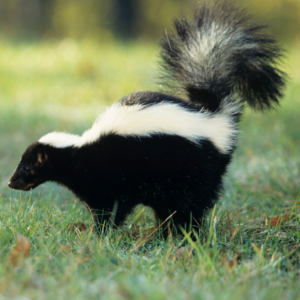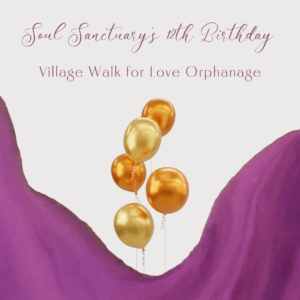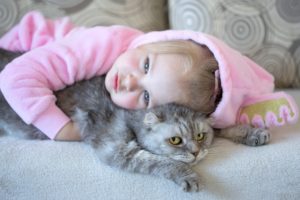
Help! My Siblings are Fighting!
All around the world, my human family is having a really hard time. In the midst of conflict, it’s easy to forget that we the people share something so common.


I’ve been inundated with pet stories. Vet stories. Happy stories and sad stories.
This led me to flash back through memories of childhood pets. I guess we had a bunch over the years. A dog, a kitten, a guinea pig, snakes, turtles, gerbils, fish, mice, and a chicken (a story for another time).
In my current family, we started out by petsitting the Montessori animals. Easier that way.
Let’s just say it was interesting. The frog (stunk), the chinchillas (made noise all night), the albino rabbit (ate our curtains), and the dwarf rabbit (made his heavenly exit while in our care). After all that practice, we agreed to take in a house broken rabbit (ate the couch, also departed for greener pastures above). Finally, we were ready for our own pet. Feeling confident, we brought home two dwarf hamsters and got them settled in their new home.
I still remember my third grader reading a story to Pickles and Fudge to help them adjust to their new home.
Sweet memory. And the day I came home from work greeted by a worried daughter. “Something is wrong with Pickles. Can you look at him?” Pickles was alone now after Fudge departed suddenly without fanfare. Cradling Pickles in my hand, I witnessed a swollen cheek and slanted eye. Something was seriously wrong.
Ghosts of past pets hopped into our minds and our musings.
Memories of Fudge flooded the room and the conversation. The rabbits (plural). Bubbles, the goldfish won at a school fair, who recently floated to the light. Sensing a theme?.
“Is Pickles going to die?”
My daughter went to bed worried and sad. My husband reminded me of the “facts.” Dwarf hamsters have a life expectance of only 1 – 2 years. Logic told him that if one hamster died, it might just be time for the other hamster to go as well.
I don’t like facts. They limit my options.
Deeply mired within facts and fearful conditioning about pets dying, we spent the weekend observing a decrease in activity. Was Pickles eating less? Was he having difficulty breathing? Were we getting closer to losing him? It was a helpless feeling that did nothing to support Pickles, nor my daughter’s ability to process what was occurring.
Rather than hanging around waiting for this little guy to die, we took some action.
We realizes we were projecting so much worry, sadness, and fear onto this tiny creature. Flowing healing energy through our hands, hearts, and minds, we held little Pickles. Pictures of dolphin friends, known for their healing ability, and other positive helpers were placed with near the cage. I felt a bit of relief as if I had ‘done something.’
Until I realized that my daughter’s first question upon waking or returning from school was “Is Pickles dead?”
Enough. I realized that if this was a larger animal, such as a dog or cat, I would already be at the vet to explore what was wrong. So, why wasn’t I calling a vet for Pickles? Was I unwilling to spend the time, money, or attention because he was small and had a predicted short lifespan? Was I viewing Pickles as expendable simply because he was a hamster?

How could I go through my days without exploring what might be done for the benefit of Pickles and, relatedly, my daughter? I found a vet who specialized in “pocket pets.” I made an appointment for the same day. “First name?” asked the kind clerk. “Kathy,” I replied. “Name of the hamster?” she kindly prompted me. Oh.
Two hours later, Pickles Milano and I were off to his appointment.
I was touched by the kindness of the vet and her assistant who clearly respected little Pickles regardless of his predicted life span. The verdict? Pickles had an abscess in his cheek for some unknown reason which could be rectified by surgery.
Oh my goodness. Nothing was wrong with his eye after all – it was just squished by the swelling. With a little anesthesia, sweet Pickles would have this gook drawn out of his cheek and live happily ever after for some time to come thanks to his strong heart. “How much would all of this cost?” I asked. Silly question, really. As if I could walk away.
As Pickles Milano was led to surgery, I was surprised by the depth of my respect for this tiny speck of life.
And the welling of emotion as I shed a tear in the waiting room. My heart opened as I considered what it might be like for such a tiny animal, usually protected within his cage, to experience this medical intervention. I pushed my worry aside and drew forth every positive ray of energy for the benefit of my furry teacher who reminded me of the importance to respect all life, all ways.
“We have to hurry back to the car,” I said, “Pickles is waiting.”
Expressions of confusion, fear, and hope flitted across my daughter’s face. Followed by a big smile when she learned that Pickles was sticking around for a while longer. For the next two weeks, that wiggly fur ball brought the family together morning and night as we attempted to drip the antibiotic into his tiny mouth. With minimal mess, lots of laughter, and only a few nips, Pickles absorbed the nurturance heaped upon him. We all shared a collective breath of relief.
At the end of this experience, we conducted a cost analysis.
Examination, anesthesia, surgery, and antibiotic: $101. Our daughter sleeping peacefully while a lively Pickles Milano created a ruckus running on his wheel all night: Priceless.
Peace be with you and with all. No exceptions.


57% of Americans report that experiences make them happiest, as reported on Happify (a wellbeing website). Especially experiences that connect you with friends and family, provide a memorable story, align with personal values, or are just downright unusual. Using your money for leisure boosts wellbeing while the thrill is short for purchasing material goods. Good news! A cup of coffee with a friend carries more weight in the wellbeing arena than your mortgage.



Learn the one essential skill that allows you to face any challenge with confidence, sturdiness, and inner calm.
More than a technique. It’s a game changer.


All around the world, my human family is having a really hard time. In the midst of conflict, it’s easy to forget that we the people share something so common.


Decision time. Do I take my dog out front in my pjs and pink fuzzy slippers to bless “his” fire hydrant or let him roam free in the backyard?


I turned off the car, took one conscious breath, and sat a moment. Finding a space of peace within as I let my busy mind and active body settle.


It’s a bit mind blowing to review the journey that got me creating Soul Sanctuary. Funny how Life has a way of inviting you onto a new path.


It was a gorgeous morning as I sat in the peaceful stillness of my kitchen. I settled in to watch the well orchestrated routine of the birds flying into the tree.


I was leaving Panera, hotfooting it back to work, when I witnessed the sweetest thing. An ancient couple holding hands and meandering slowly.

We use cookies to ensure that we give you the best experience on our website.